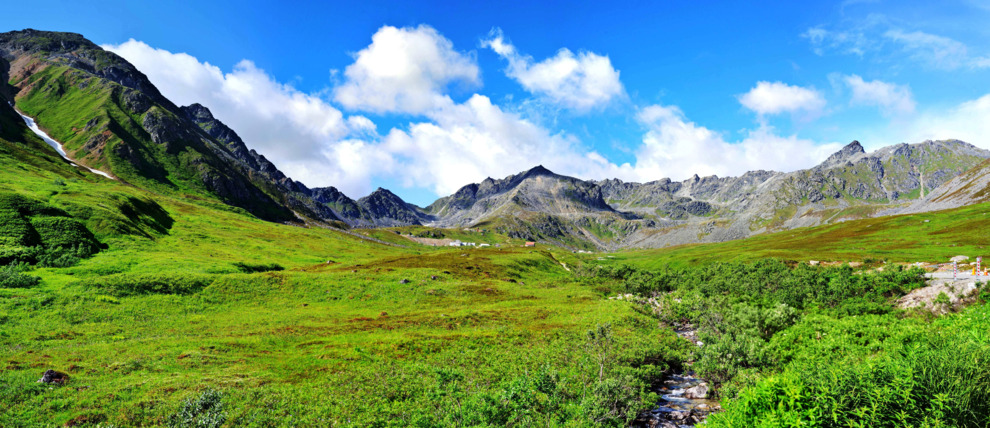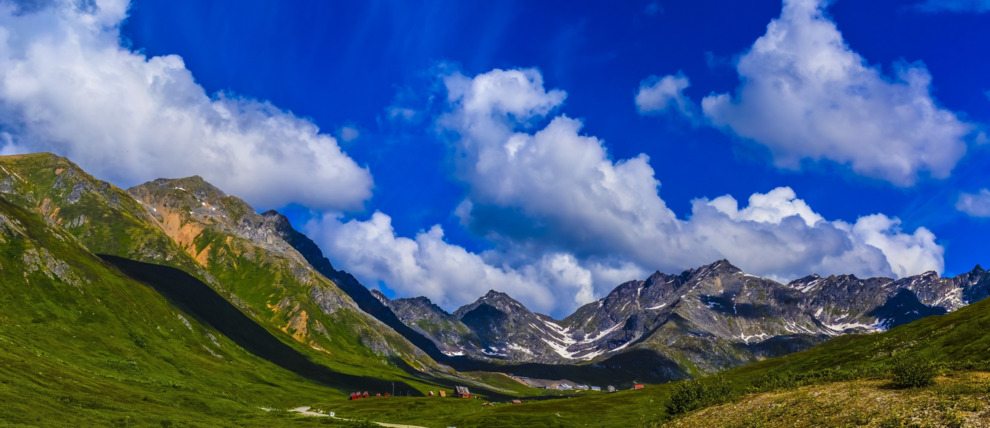Independence Mine State Park in Hatcher Pass
In the late 1800s, the rumor of gold drew thousands of optimistic prospectors to southeast Alaska, the Yukon, and the Klondike. While the frenzy in the Interior raged, gold was quietly found in the Talkeetna Mountains north of what would later become Anchorage. Claims were systematically staked, equipment hauled in, and the Independence Mine established. At its peak in 1941, the mine employed more than 200 workers and supported a small nearby boom town of businesses and miner families.
Lucrative mining continued until the beginning of World War II, when the Independence Mine was ordered to close by the U.S. government because it was considered nonessential to the war effort. Mining began again in 1946, but restrictions on pricing and increasing inflation made running the mine unprofitable. The site was abandoned in 1951. Nature soon took over, with snow slowly caving in buildings and meltwater whisking away artifacts.
The Independence Mine State Historical Park was established in the late 1970s. The Mine Manager's House, built in 1939, has been renovated and now serves as a visitor center. The 271-acre park also includes a museum, several buildings remaining from the boom town, old gold mining machinery, hiking trails, and recreational gold panning. A guided half-day hiking and history tour of the mine offers visitors a firsthand look at this important piece of Alaskan history.
Independence Mine State Historical Park is in Hatcher Pass about an hour by car from Anchorage. The route travels north to Palmer and takes the Hatcher Pass Road about 18 winding miles to the park. It's a pretty drive, much of it alongside the tumbling Little Susitna River. There are several pullouts perfect for a lunchtime picnic.
The park is typically open mid-June to early September, although this depends entirely on snow and road conditions. There is a $5 day-use parking fee. For more information about Independence Mine State Historical Park, please visit the Alaska Parks website.

